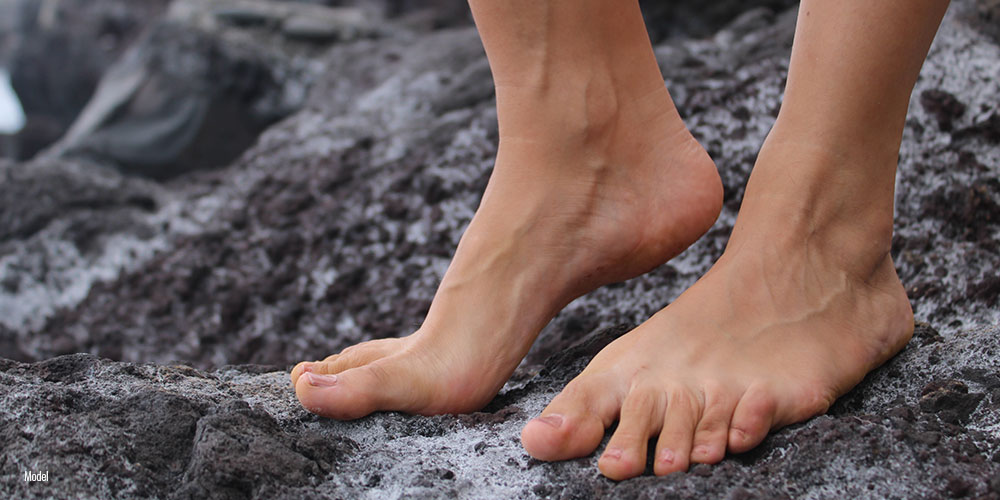Hammertoe Vs. Mallet Toe Vs. Claw Toe: What’s the Difference?
Posted February 03, 2025 in Hammertoes

Hammertoes are some of the most common foot ailments, but many patients have difficulty determining whether they have a hammertoe, mallet toe, or claw toe. This blog discusses the three toe disfigurements, their causes, and how to treat them.
4 Min Read:
Hammertoe Guide
Common foot ailments like hammertoe aren’t usually cause for alarm—until the pain is too much and starts interfering with your daily activities. Unfortunately, once these issues progress to that extent, it’s time for medical intervention and perhaps even surgery. To limit this risk, it’s a good idea to pay attention to your feet and learn the signs of hammertoe before they get too far gone.
What Is Hammertoe?
A hammertoe is a deformity of the toe that causes it to buckle, usually at the second joint or the middle of the toe. This condition occurs when the tendons that keep the toes straight when relaxed become imbalanced, keeping the toes from straightening. When left to progress, hammertoe results in a loss of flexibility and mobility and can cause increasing pain.
Are Mallet Toe and Claw Toe the Same Thing?
Not exactly. Mallet toe and hammertoe have the most similarities of the three, as hammertoe is a bend in the middle joint of the toe, while mallet toe has a bend to the joint nearest the toenail. Both are symptoms of a muscle imbalance.
Claw toe, on the other hand, is a deformity that causes the toes to bend up at the joint closest to the foot and then bend down at the middle and end joints, causing the toes to resemble a claw, hence the name. Claw toes characteristically curl down toward the floor, resulting in corns and calluses as they rub against the patient’s shoe.
Rigid, Semi-rigid, and Flexible Hammertoe
Rigid, semi-rigid, and flexible all refer to the level of stiffness or rigidity of the affected joint. If you have flexible hammertoes, this means they can move and be bent and straightened. Semi-rigid hammertoes are more stiff than flexible hammertoes, but they can still move and often can still be straightened out. Rigid hammertoes are the most severe and cannot move easily (or at all) in any direction.
Causes of Hammertoe
Hammertoe has many causes, including:
- High heels or tight footwear can crowd the toes, causing them to be curled and not lie flat. After a prolonged period, the toes may remain this way.
- Injury or trauma can cause the toe to be more likely to develop hammertoe.
- The imbalance of the toe muscles is the primary cause of hammertoe, as imbalanced muscles put pressure on the tendons and joints.
Commonly Affected Toes
Hammertoe can affect all four of your lesser toes (the toes other than the big toe), while mallet toes most commonly affect the second toe because it is the longest. Claw toes also primarily affect the lesser toes rather than the big toe.
Hammertoe Treatments
If you think you are developing a hammertoe, mallet toe, or claw toe, it’s best to seek care from your podiatrist as soon as possible. Leaving treatment for too long only allows the condition to progress, increasing pain and decreasing mobility. It also makes it harder to treat, as early-stage hammertoes can be helped through noninvasive methods, such as:
- Physical therapy and stretches
- Tape or bands to help flatten the toes
- Orthotics to help “train” the toes to straighten out
Hammertoe Surgery
In advanced cases, surgery is usually the best approach. Your surgeon may opt for one of the two following hammertoe surgery methods:
- Joint resection – The surgeon cuts the constricted ligaments and tendons to release the joint and removes a small portion of the bone to straighten it. This method may require a temporary pin to be put in place to prevent the toe from moving.
- Fusion – The surgeon will perform a joint resection and remove the ends of the bones to prepare them to grow together or fuse. Pins are also used to keep the joint stable after surgery and then are removed once the fusion process is complete.
Depending on your type of toe concern and the relative progression of your case, your podiatrist may recommend alternative methods for treatment.
Want to Learn More About Hammertoes in NYC?
The best way to determine what type of hammertoe you have is to schedule a consultation with our experienced NYC podiatrist, Dr. Ethan Ciment. Call Chelsea Foot & Ankle today at (646) 929-4149 or fill out the contact form to get started.
